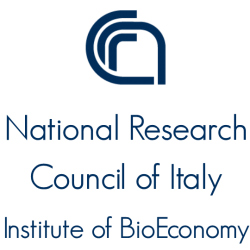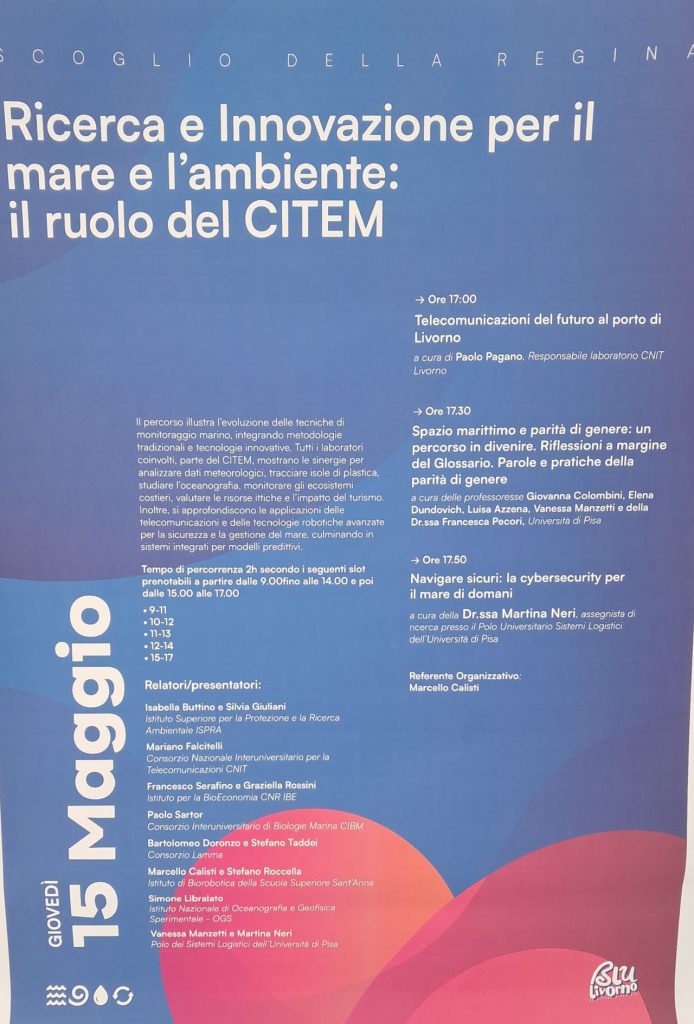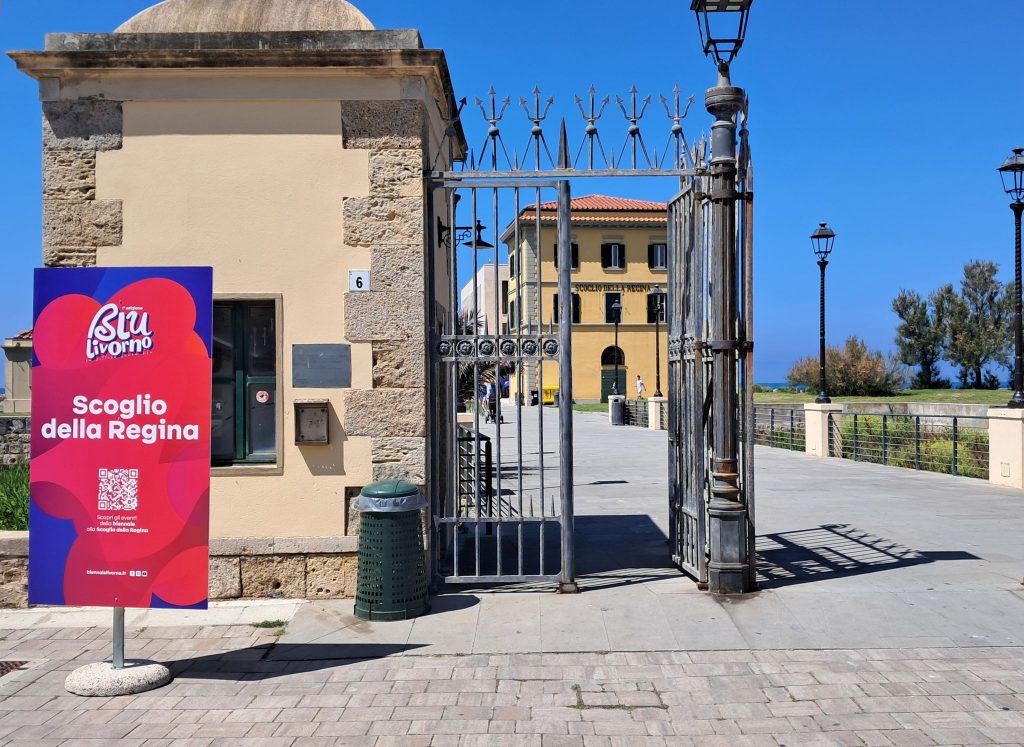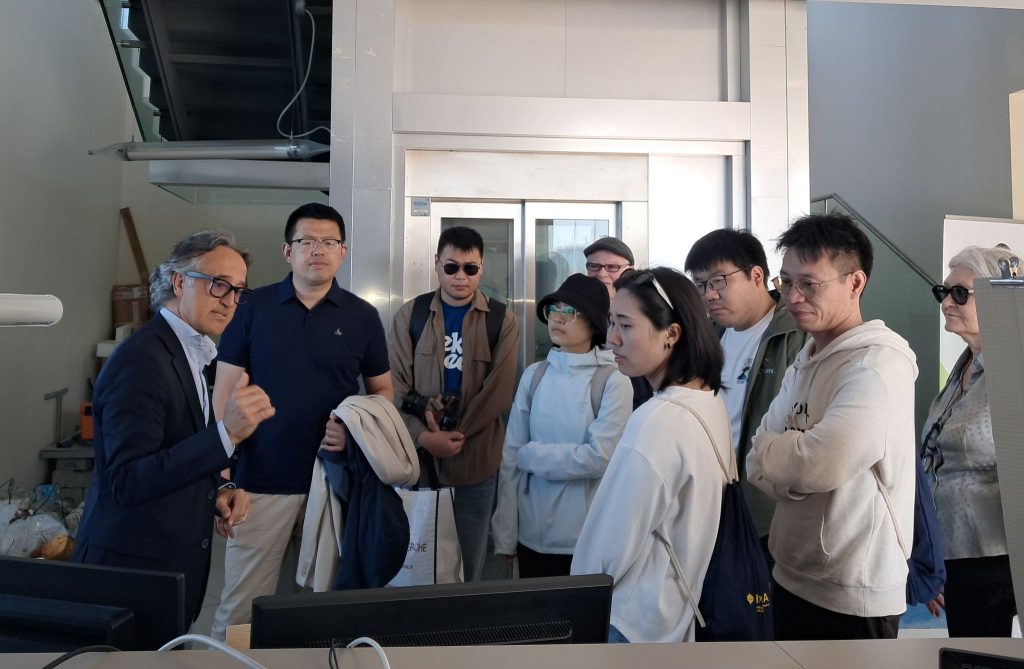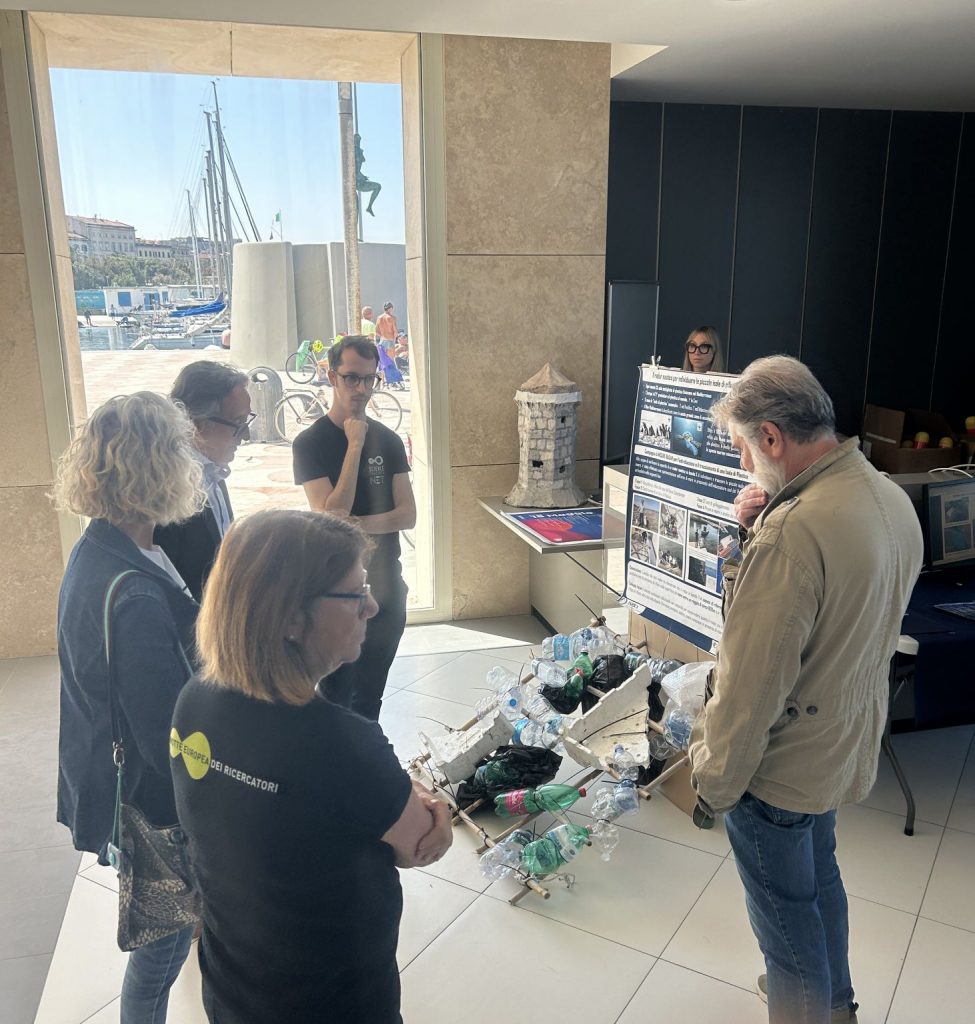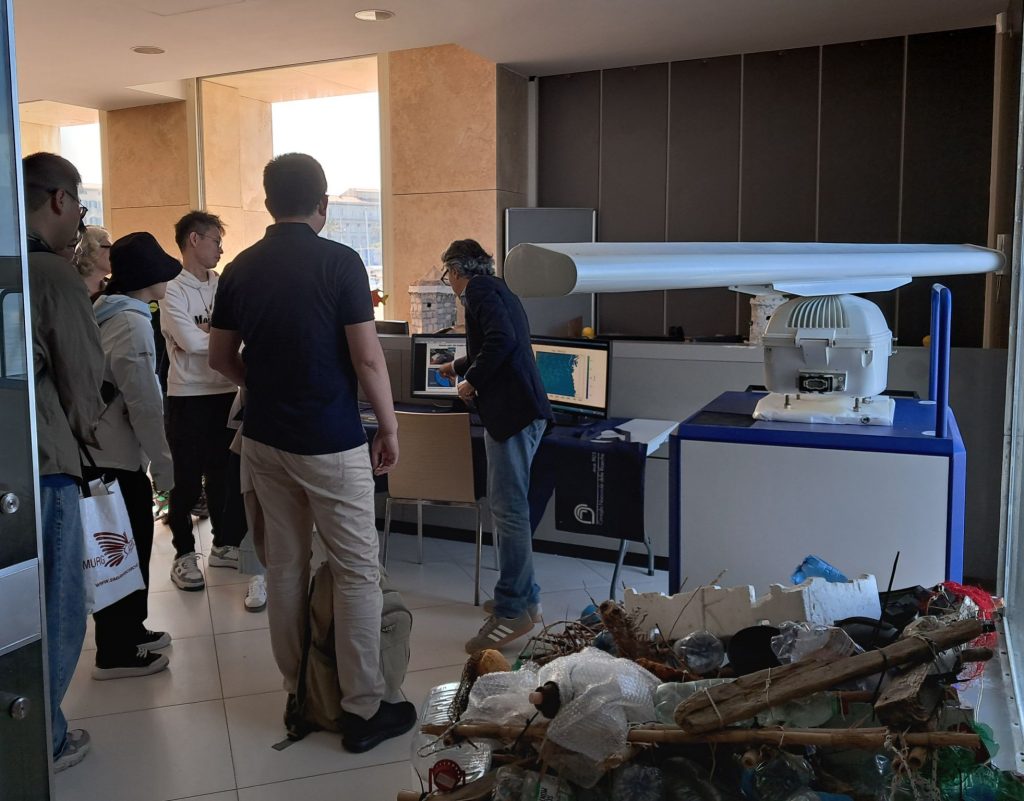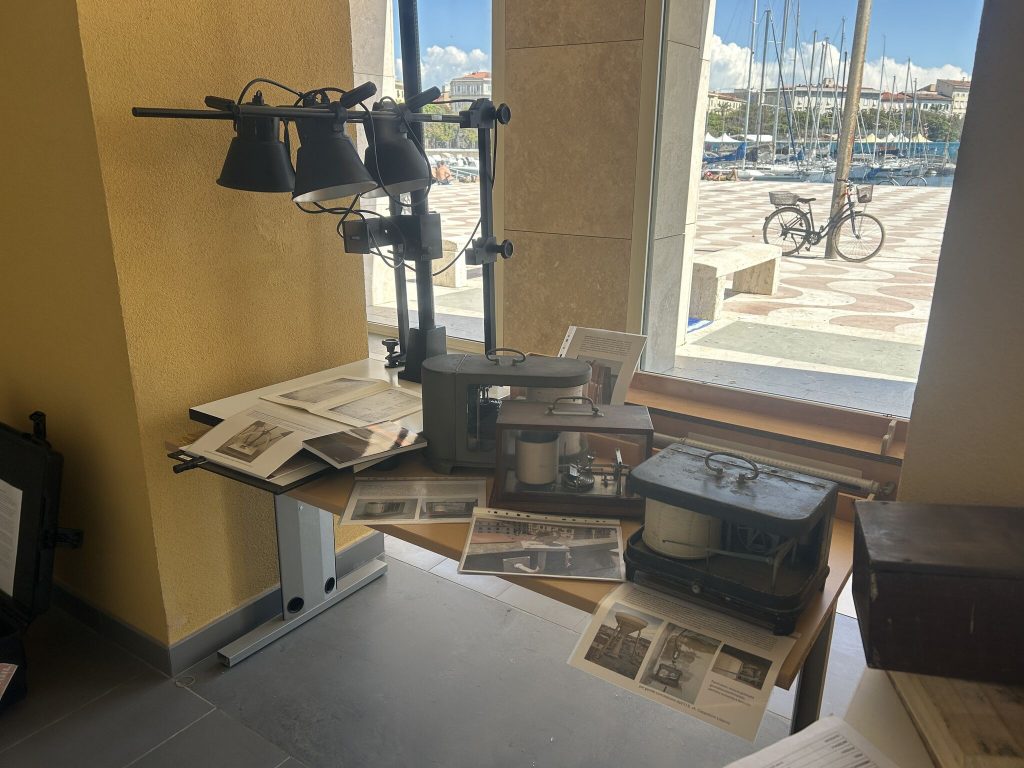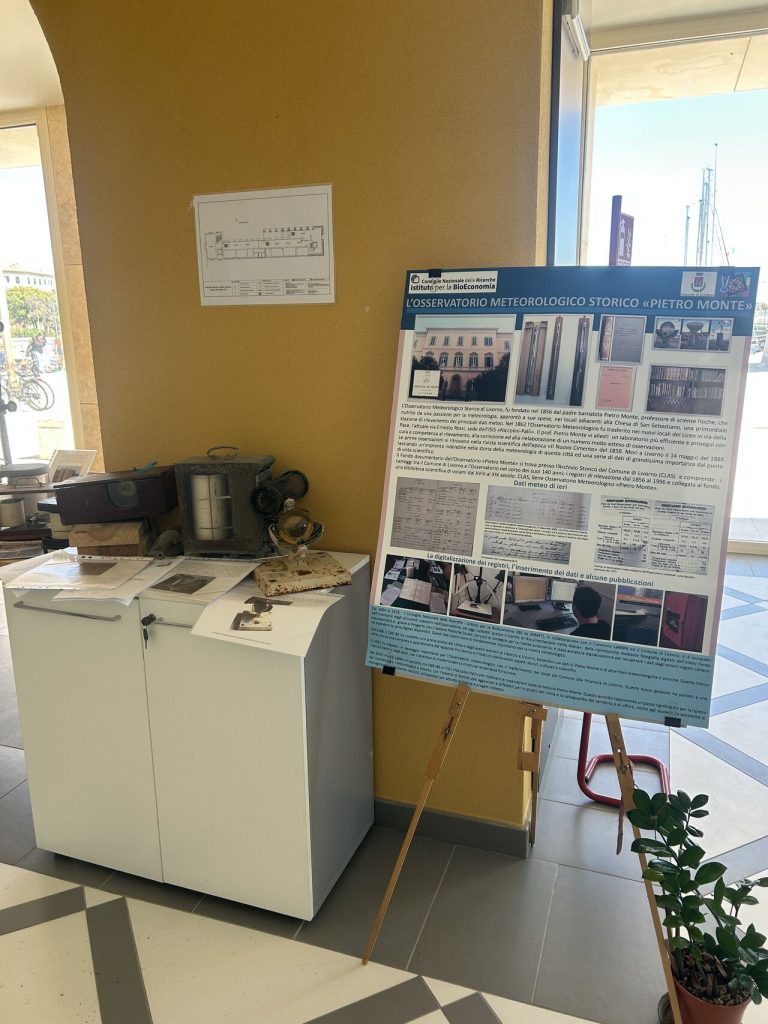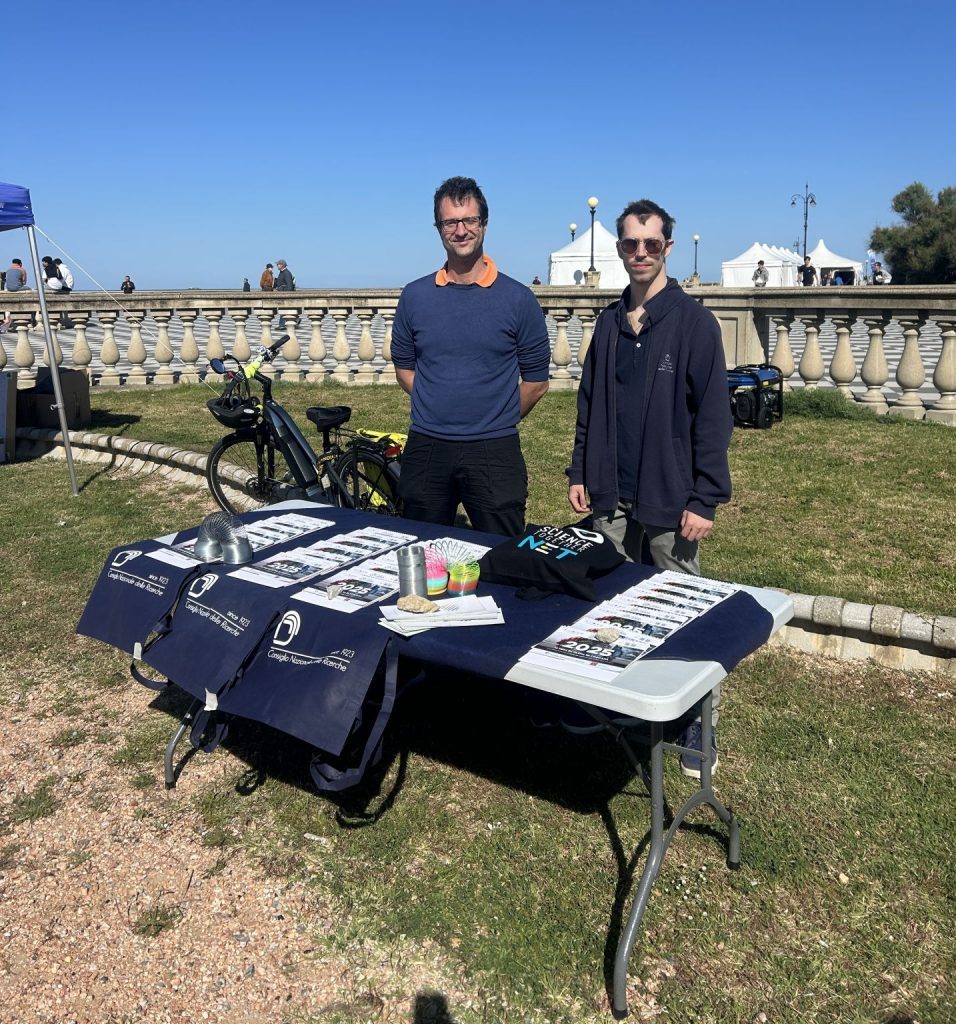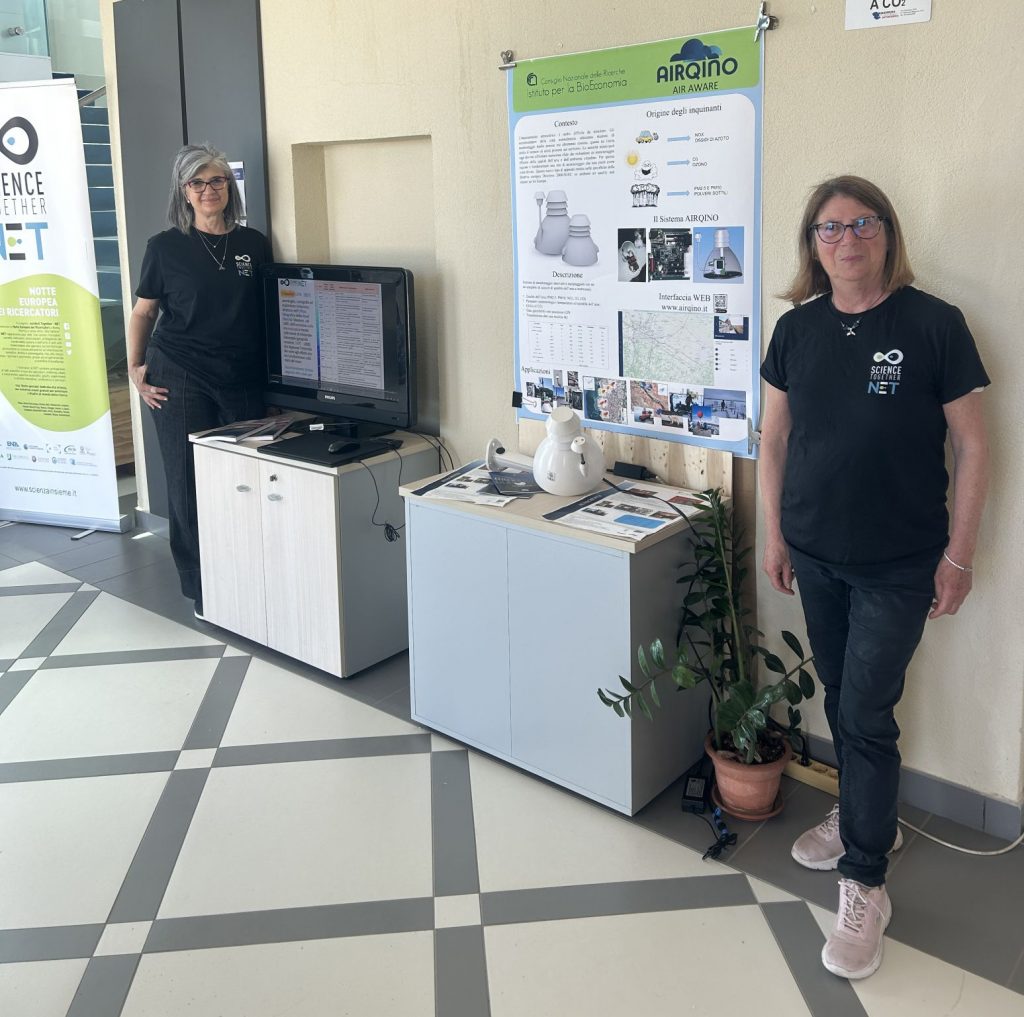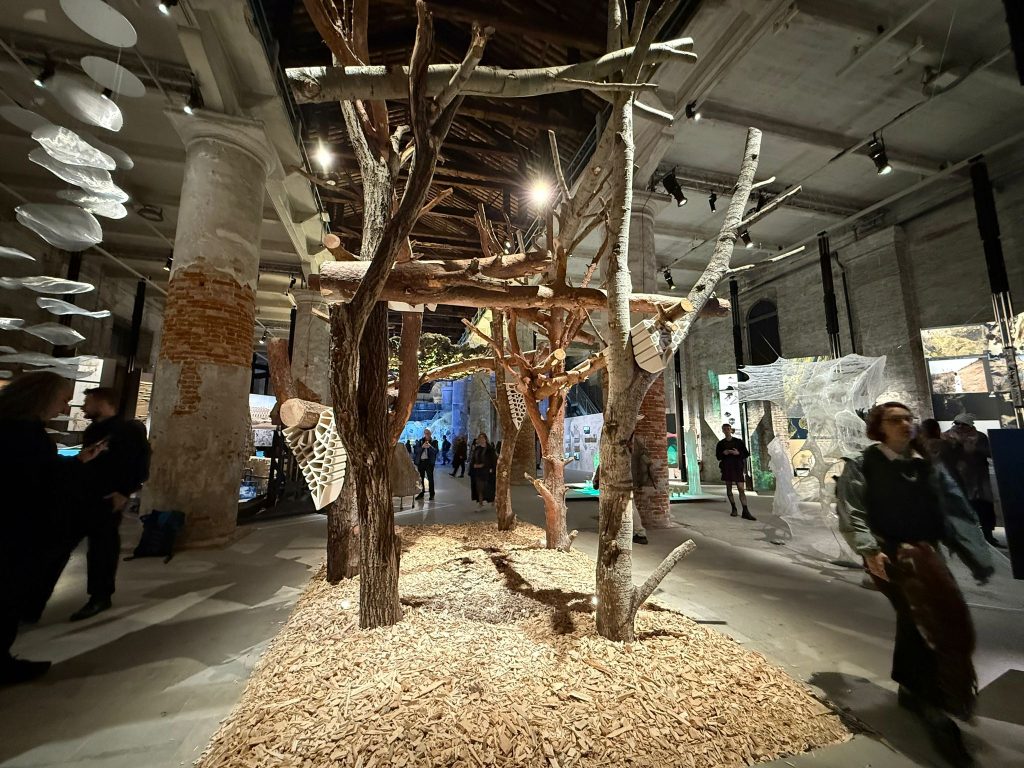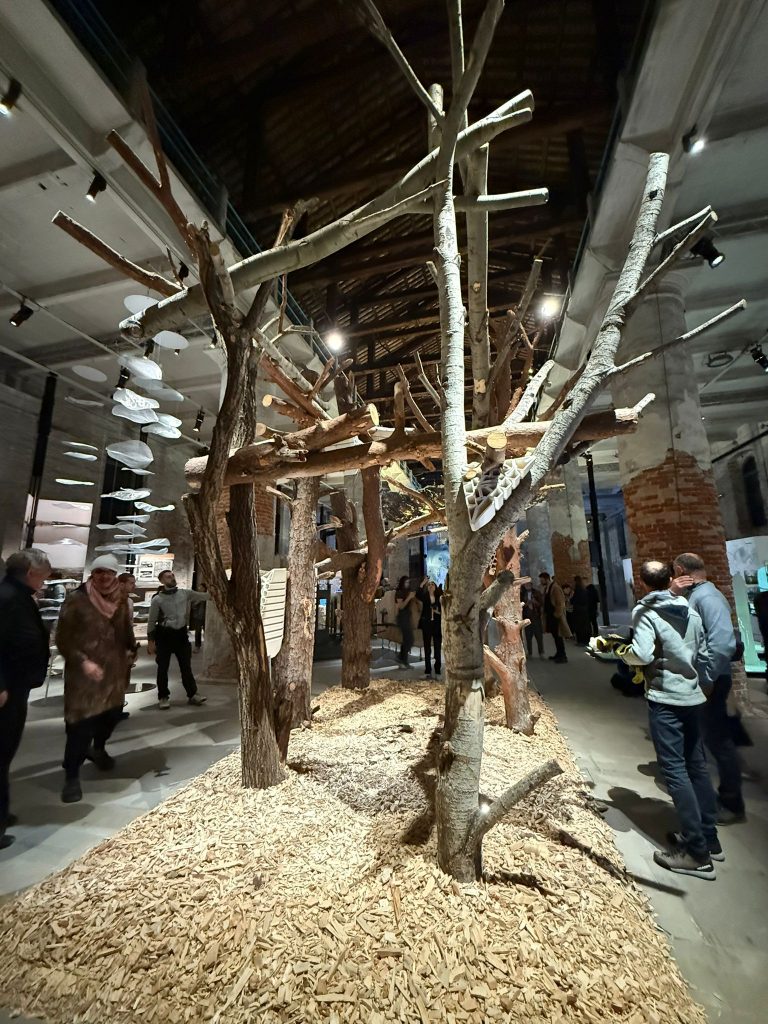CNR IBE, together with other Research Institutes belonging to the Center for Innovation in Marine Technologies (CITEM), participated in the events of the Biennale del Mare 🌊 (https://www.biennalelivorno.it/) which was held in Livorno, from 14 to 17 May.
During the opening day of the laboratories, on 15 May, some researchers from the institute had the opportunity to interact with numerous students and citizens visiting the Scoglio della Regina, where the stations of all the Research Institutes belonging to CITEM were present www.biennalelivorno.it/eventi/
Participants were guided through a tour that presented the evolution of marine environment monitoring methods, covering various aspects of applied marine research. The CNR IBE kicked off the day with a brief presentation on the history of meteorology and the importance of the centuries-old historical data series on the Mediterranean from the “Pietro Monte” Meteorological Observatory, especially in the context of climate change studies. During this stage, participants also had the opportunity to observe the use of X-band radar and its applications in marine monitoring and the identification and tracking of drifting plastic debris. The CNR IBE was also present on May 16 at the Terrazza Mascagni for the “A Sea of Friends” event, where high school students participated in various practical activities. The simulation of transverse and longitudinal sea waves using toy springs was a particular highlight.”>Participants were guided through a tour that presented the evolution of marine environment monitoring methods, covering various aspects of applied marine research.
The CNR IBE kicked off the day with a brief presentation on the history of meteorology and the importance of the centuries-old historical data series on the Mediterranean from the “Pietro Monte” Meteorological Observatory, especially in the context of climate change studies.
During this stage, participants also had the opportunity to observe the use of X-band radar and its applications in marine monitoring and the identification and tracking of drifting plastic debris. The CNR IBE was also present on May 16 at the Terrazza Mascagni for the “A Sea of Friends” event, where high school students participated in various practical activities.
The simulation of transverse and longitudinal sea waves using toy springs was a particular highlight.
The event was attended by colleagues Dr. Francesco Serafino, Gianmarco Lunghi, Graziella Rossini, Laura Pellegrino, David Pellegrini, Raffaella Manzo, Simone Putzolu, Alessandro Zaldei. Collaboration was provided by the Municipality of Livorno, CLAS Historical Archive of the Municipality of Livorno, ISIS “Niccolini-Palli”, Nautical Technical Institute “A. Cappellini”, Documentation Center “Villa Maria” of the Municipality of Livorno.”>The event was attended by colleagues Dr. Francesco Serafino, Gianmarco Lunghi, Graziella Rossini, Laura Pellegrino, David Pellegrini, Raffaella Manzo, Simone Putzolu, Alessandro Zaldei.
Collaboration was provided by the Municipality of Livorno, CLAS Historical Archive of the Municipality of Livorno, ISIS “Niccolini-Palli”, Nautical Technical Institute “A. Cappellini”, Documentation Center “Villa Maria” of the Municipality of Livorno.
Domino 3.0: Generated Living Structure
A regenerative architecture born from the climate crisis – on display at the Venice Biennale 2025 (10 May – 23 November)
Domino 3.0: Generated Living Structure is a project exhibited at the Venice Biennale 2025, running from 10 May to 23 November. It emerges as an innovative and participatory response to extreme climate change, transforming the aftermath of storm Vaia (2018) into a new vision of living.
Domino 3.0 is a living structure, a dynamic and inclusive system that promotes a renewed relationship between the environment, construction, and society.
In the face of rapidly intensifying climate challenges, architecture must necessarily redefine itself. Domino 3.0: Generated Living Structure transforms the consequences of an ecological disaster into a regenerative design approach aimed at uniting nature, technology, and society. After storm Vaia swept through northern Italy in October 2018, vast quantities of trees lay uprooted and felled by the forces of nature. Domino 3.0: Generated Living Structure repurposes them as essential building elements, embodying both resilience and vulnerability.
The fallen trunks were 3D scanned, capturing every knot, deformation, and fracture shaped by the terrain; an artificial intelligence model then analyzed how to reuse these irregular forms within cohesive systems.
Whereas modernist ideals, exemplified by Le Corbusier’s Dom-Ino system, favored standardization, Generated Living Structure embraces complexity. Custom 3D-printed joints precisely align each piece in a union of sculptural dynamism and structural stability—a method that respects local knowledge, involves communities, and directly addresses the climate emergency.
By challenging architecture’s dependence on standardized materials, we aim for more sustainable practices. Domino 3.0: Generated Living Structure thus becomes a benchmark for community-driven action, seeking to create meaningful partnerships with those whose lives and landscapes are most directly affected.
Among the supporters is the CNR IBE – Institute of Bioeconomy, based in San Michele all’Adige, which contributed scientific expertise in defining the technological parameters of the different wood species used.

